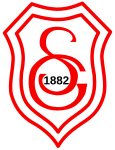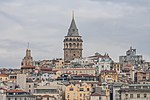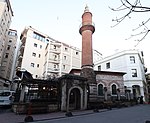Arap Mosque

Arap Mosque (Turkish: Arap Camii, literally Arab Mosque) is a mosque in the Karaköy quarter of Istanbul, Turkey. The building was originally a Roman Catholic church erected in 1325 by the friars of the Dominican Order, near or above an earlier chapel dedicated to Saint Paul (Italian: San Paolo) in 1233. Although the structure was altered during the Ottoman period, it is the only example of medieval religious Gothic architecture remaining in Istanbul. The church was converted into a mosque by the Ottomans between 1475 and 1478, during the reign of Sultan Mehmed II, and became known as the Galata Mosque. It was later given by Sultan Bayezid II to Muslim Arab refugees from Al-Andalus who escaped the Spanish Inquisition in 1492 and settled in the Galata neighborhood of Istanbul (hence its current name, Arab Mosque).
Excerpt from the Wikipedia article Arap Mosque (License: CC BY-SA 3.0, Authors, Images).Arap Mosque
Galata Mahkemesi Sokağı,
Geographical coordinates (GPS) Address External links Nearby Places Show on map
Geographical coordinates (GPS)
| Latitude | Longitude |
|---|---|
| N 41.02432 ° | E 28.97104 ° |
Address
Arap Camii (Arap Cami)
Galata Mahkemesi Sokağı
34421 (Arap Cami Mahallesi)
Türkiye
Open on Google Maps







